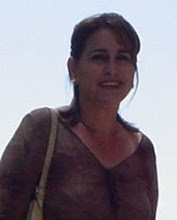
First, comes the sound of water falling, the sound of water that not yet shows. Next the guide said: This is the way. A lookout's stairs impose itself and is not left another remedy that to raise them to find immensity. The cooing is louder, we are arriving. Just some steps… A few steps…
Two flows of water are seen from the lookout. The higher of both is not the highest of
This time the miracle was done at Pinares of Mayarí, between the thicknesses of the pine cubense, the tocororos, the green carpenter, the cartacuba, and the nightingale. Is fascinating what the irregularities of the lot and the force of gravity can achieve, that's nature.
The arrival and the visitors' departure dial the daily rhythm. Almost the sun shows up, the road's red dust is stirred. Not to smoke, not to throw papers, not to kill animals, these are some of the measures that should have in account the visitors. Of the international tourism arrive the agencies Cubanacan, Gaviota, Ecotur, and Cubatur, what bring a flow of 20 to 30 people in the day.
The Guayabo waterfalls is placed in the National Park The Measurement (
Tell according to him, one of the most singular plants of the zone is the peinpalantus nipense, is similar to a cactus, but sprouts a white flower. The peipalantus is endemic of the zone and inhabit just in this region of the country.
The Company Forestal of the region holds 13 projects at the zone. Environmental Education's project has like first objective to develop a protective conscience in the people that live on close to the area damping of the park.
The reconstruction of forests is other of the projects that is favorable to preserve the ecosystem. In the last six years,
Now, from the height the green predominates, and we just can see the top of that great iceberg that is the water torrent in falling. A colilargo sparrow hawk marauds in the neighborhood. This animal is part of the Project of Threatened Birds, next to the nightingale, known as the tenor of the mountain, and two sorts further.
The Guayabo is the spinal column of a surroundings that goes over









